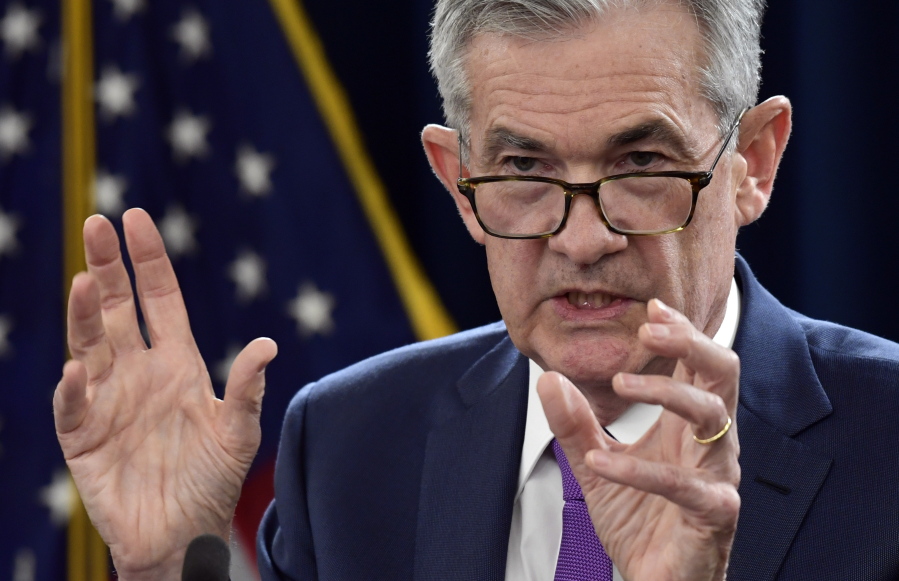WASHINGTON — Federal Reserve Chair Jerome Powell signaled Wednesday that the Fed plans to announce as early as November that it will start withdrawing the extraordinary support it unleashed after the coronavirus paralyzed the economy 18 months ago.
Powell said that if the job market maintained its steady improvement, the Fed would likely begin slowing the pace of its monthly bond purchases. Those purchases have been intended to lower longer-term loan rates to encourage borrowing and spending.
“I think if the economy continues to progress broadly in line with expectations,” the Fed chair said at a news conference, “I think we can easily move ahead at the next meeting” in November.
At the same time, the Fed’s policymaking committee indicated that it expects to start raising its benchmark rate sometime next year — earlier than the members had envisioned three months ago and a sign that they’re concerned that high inflation pressures may persist. Powell stressed, though, that a rate hike would occur only after the Fed had ended its bond purchases, a process he said would likely last through the middle of next year.
Taken together, the Fed’s plans reflect its belief that the economy has recovered sufficiently from the pandemic recession for it to soon begin dialing back the emergency aid it provided after the virus erupted. As the economy has strengthened, inflation has also accelerated to a three-decade high, heightening the pressure on the Fed to pull back.
The central bank’s pullback in bond purchases and its eventual rate hikes, whenever they happen, will mean that some borrowers will have to pay more for mortgages, credit cards and business loans.
The economy has recovered faster than many economists had expected, though growth has slowed recently as COVID-19 cases have spiked and labor and supply shortages have hampered manufacturing, construction and some other sectors. The U.S. economy has returned to its pre-pandemic size, and the unemployment rate has tumbled from 14.8 percent, soon after the pandemic struck, to 5.2 percent.
At the same time, inflation has surged as resurgent consumer spending and disrupted supply chains have combined to create shortages of semiconductors, cars, furniture and electronics. Consumer prices, by the Fed’s preferred measure, rose 3.6 percent in July from a year ago — the sharpest such increase since 1991.
In their new quarterly projections, Fed officials expect to raise their key short-term rate once in 2022, three times in 2023 — one more than they had projected in June — and three times in 2024. That benchmark rate, which influences many consumer and business loans, has been pinned near zero since March 2020, when the pandemic erupted.
One factor in the Fed’s move toward eventually raising rates is that inflationary forces, as Powell noted in his news conference, appear to be enduring longer than expected. In their new forecasts, Fed officials raised their projection for “core” inflation, which excludes volatile food and energy prices, to 2.3 percent next year, from a 2.1 percent estimate in June.



